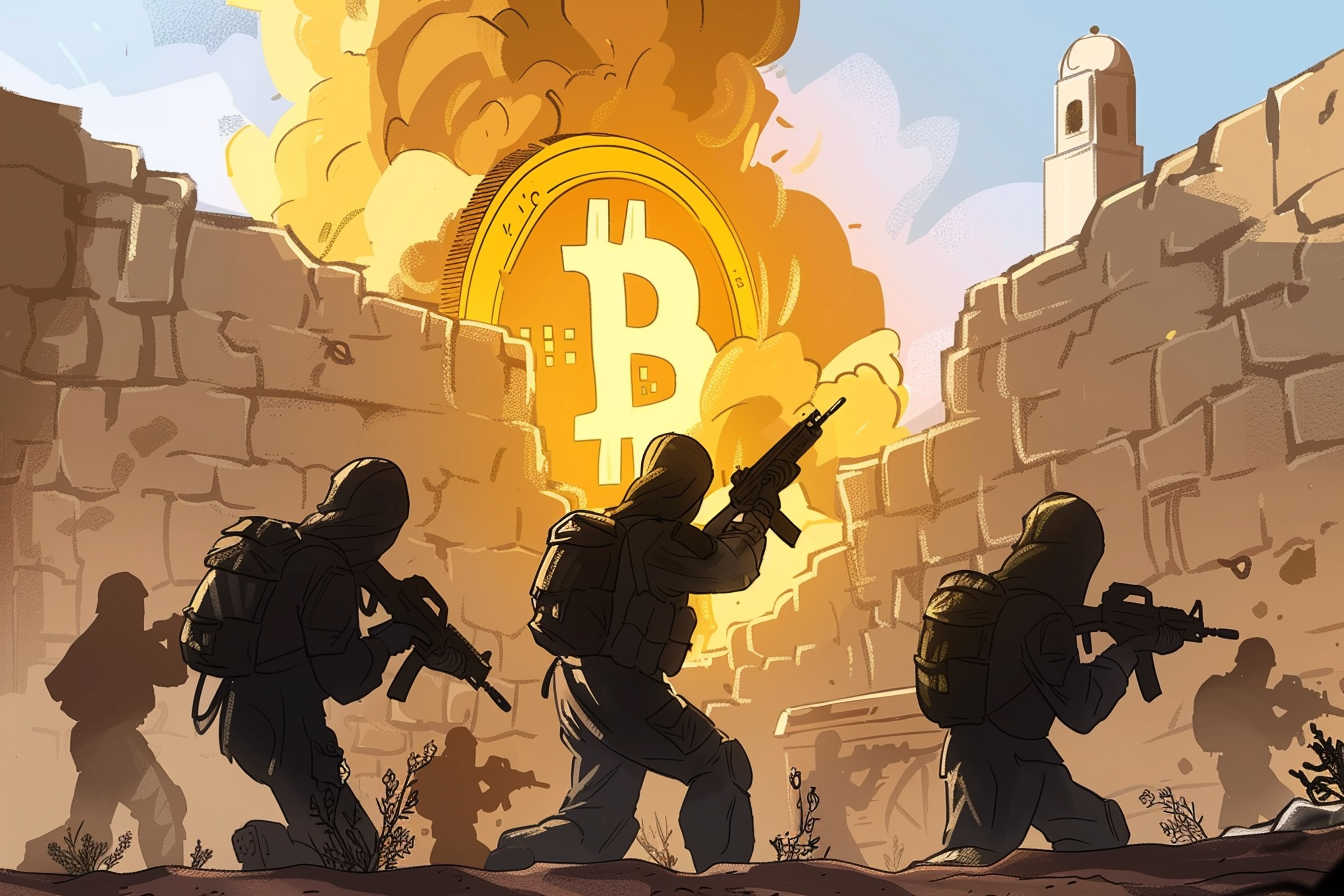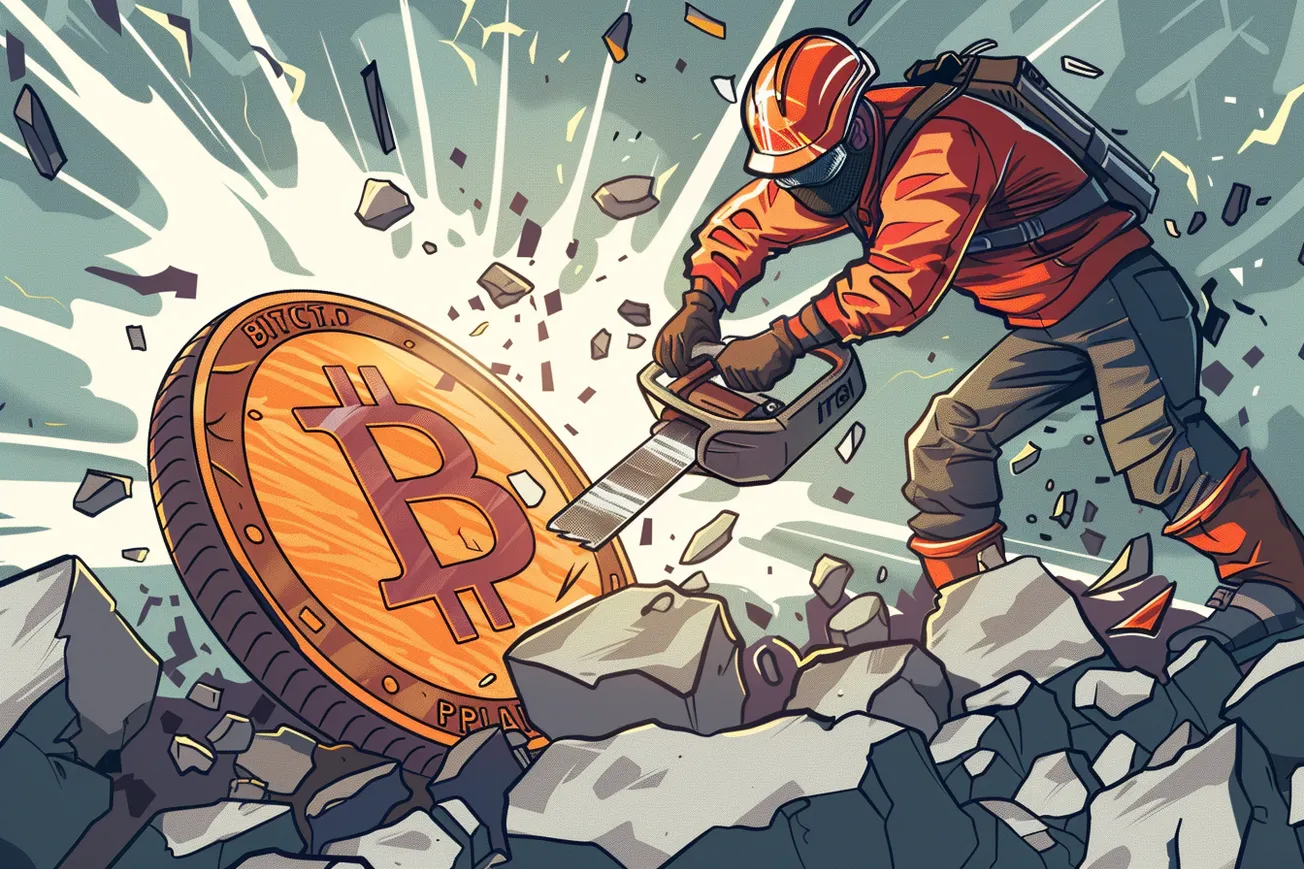Table of Contents
Woaaah we're halving there... Wooahh mining on a prayer. You might as well call us Jon Block Jovi at this point. Bitcoin Jovi? Taking to the stage in just a few days with an even greater presence than Bon Jovi at a midlife crisis birthday karaoke party is Bitcoin's most anticipated event of the year: halving.
And like Bon Jovi's countless reunion tours, Bitcoin halving has come around the block a fair few times over the years, sending fans wild and giddy with excitement. This time is no different. With Bitcoin ETFs just being approved, the significance of this halving could be more prevalent than ever.
Tomorrow's Getting Easier, Make No Mistake
Bitcoin halving is set to occur on 19 April 2024. To understand the hype around Bitcoin halving, we must first understand what it is and how it promises to make our lives better. In an effort to reduce inflation, Bitcoin halving is programmed into the Bitcoin protocol, halving the rewards Bitcoin miners receive for processing transactions on the blockchain:
- 2012 - rewards halved to 25 BTC
- 2016 - rewards halved to 12.5 BTC
- 2020 - rewards halved to 6.25 BTC
This system will continue until 2140 when the proposed limit of 21 million Bitcoin tokens is reached.
Still don't get it? Check out Coinbase's Bitcoin halving video that explains the concept in pizza terms:
Food for thought:
— Coinbase 🛡️ (@coinbase) April 15, 2024
What if money was designed to get you more over time, not less?#Bitcoin pic.twitter.com/z8eHF8JltQ
Holding On to What We've Got
Historically the price of Bitcoin has risen post-halving. So it would make sense to hold your Bitcoin ahead of this period if you believe the same will happen again.
2012's halving saw Bitcoin's price jump from $12.35 to $127 just 150 days later. In 2016, 1 BTC traded at $651 before jumping to $758. Four years later, BTC hit $8,821 ahead of its halving and $10,943 shortly after.
Miners are currently rewarded 6.25 BTC for each successfully mined block as well as small transaction fees of less than 0.5 BTC. These Bitcoins are new Bitcoins, edging us closer to the maximum amount of 21 million Bitcoins in circulation.
In a few days' time, miners' rewards will be slashed again to 3.13 BTC. Miners will be forced to seek more cost-cutting measures, thus improving mining efficiency.
As mentioned, this year's halving comes as Bitcoin ETFs have unleashed new waves of wealth from the TradFi space into the crypto industry.
BlackRock's IBIT, one of the strongest Bitcoin ETF offerings, broke records earlier last month by reaching $10 billion faster than any US ETF in history. The fund reached the milestone in under two months from 11 January when the SEC greenlit Bitcoin ETFs. Invesco QQQ previously held the record of just over a year.

As recently as yesterday, the Hong Kong Securities and Futures Commission (SFC) officially approved several spot Bitcoin and Ethereum ETFs too. Leading asset managers including China Asset Management, Bosera Capital, and HashKey Capital Limited are among those that received the green light from the city's financial regulator.

Additionally, Bitcoin adoption is at its all-time high. According to Crypto.com, 2023 saw the number of Bitcoin users grow 35% from 432 million to more than 580 million over the year.
Giving Inflation a Bad Name
Bitcoin halving is set to slow the inflation rate from 1.8% to 0.9%. The last Bitcoin halving coincidentally occurred during the COVID-19 pandemic, which triggered a global commitment to quantitative easing.
Unlike quantitative easing, Bitcoin halving cuts the supply by half, adhering to the long-term monetary policy strategised 16 years ago by Satoshi.
Bitcoin halving obviously won't impact inflation on fiat currencies, which are used to purchase the cryptocurrency. But if market participants are concerned about inflationary pressures, especially from more unstable economies, Bitcoin might see a boom in demand.
Nigeria, which has seen inflation hit over 33%, has seen many if its citizens turn to cryptocurrency. Consequently, Nigeria has the second-highest adoption of crypto in the world, only behind India.
Crypto adoption in Nigeria is so prevalent that Binance is being held accountable for destabilizing its national currency, the naira.

Wanted Dead or Volatile
Clearly, there has been plenty of hype ahead of Bitcoin halving. However, as with every lead up to every significant event, the price is likely already baked in. It's not like market participants didn't know about when Bitcoin halving was happening.
Crypto.com CEO Kris Marszalek told Bloomberg that Bitcoin's price could continue facing selling pressure ahead of the event. “As we approach this date there may be some selling coming up” due to buy-the-rumor, sell-the-news trading, he said. In the long run, Marszalek said the halving will make a “substantial difference” and is a “positive development for the market.”
According to Blockhead's in-house research arm, brn, Bitcoin halving is likely to be a non-event in terms of price movement but could impact volatility.
“Firstly, the put/call ratio of .70 (volume) indicates that some investors are hedging their positions against expected volatility surrounding the halving. This cautious approach suggests that while optimism exists, investors are also preparing for potential market swings,” a brn analyst explains.
“Moreover, the upcoming options expirations on April 26 and May 28, occurring one and five weeks after the halving, add to the uncertainty. Options expirations often lead to increased market volatility as traders adjust their positions, potentially amplifying price fluctuations during this period.”
To read more insights from brn, subscribe for early access. Ahead of the launch, newsletters featuring detailed insights will be free.

Year to date, Bitcoin's price has risen more than 40%, though it's taken a bit of a wobble over the past few days with Chinese interest pushing it up but the Iran-Israel war pushing it down.

We anticipate a period of heightened volatility following the Bitcoin halving, yet our outlook remains bullish.
Elsewhere















